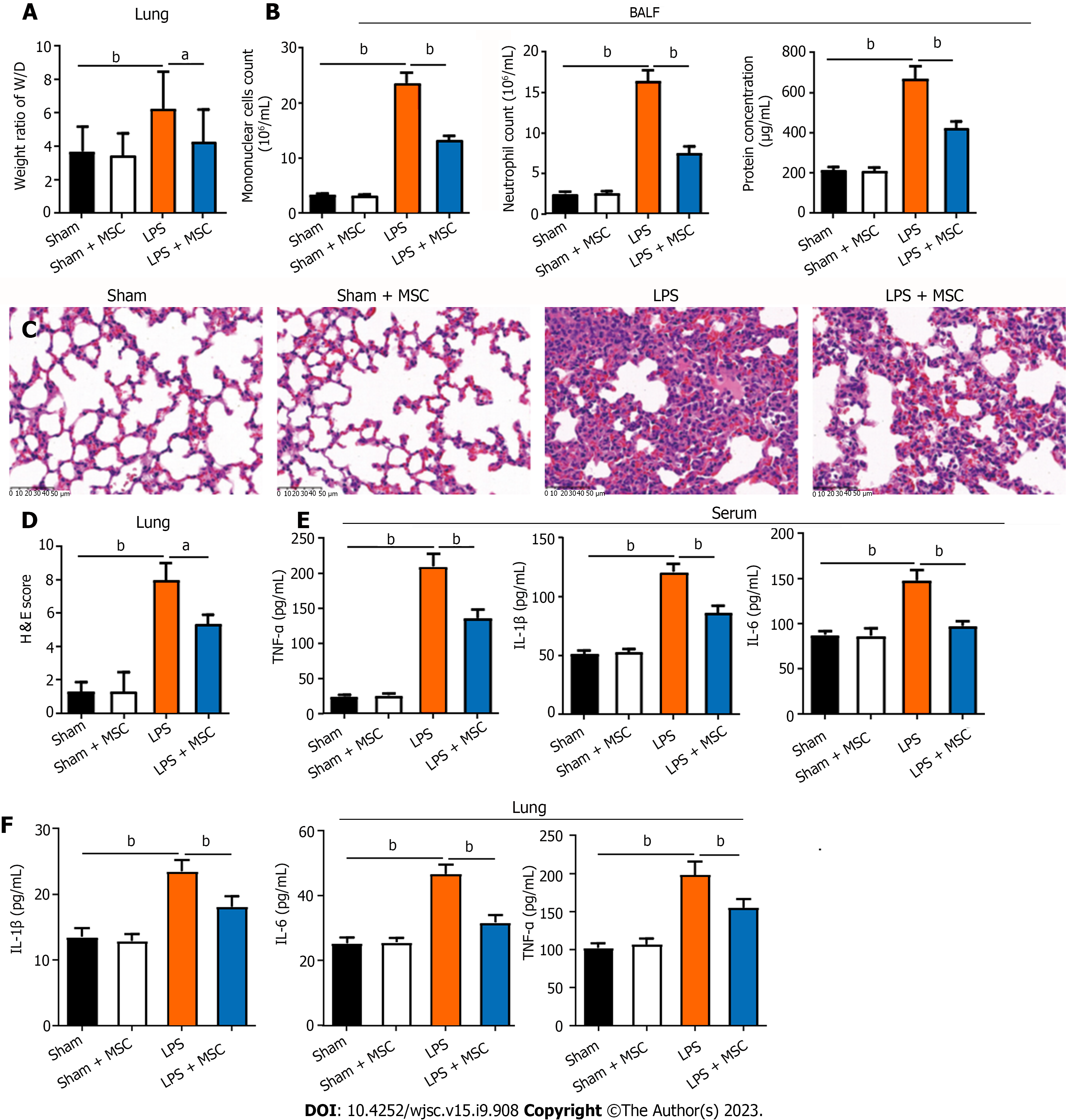Copyright
©The Author(s) 2023.
World J Stem Cells. Sep 26, 2023; 15(9): 908-930
Published online Sep 26, 2023. doi: 10.4252/wjsc.v15.i9.908
Published online Sep 26, 2023. doi: 10.4252/wjsc.v15.i9.908
Figure 1 Human umbilical cord mesenchymal stem cells attenuate lipopolysaccharide-induced lung injury and inflammation in acute lung injury mice.
A: In acute lung injury (ALI) mice, the wet-to-dry (W/D) weight ratio of the lung was higher than that of human umbilical cord mesenchymal stem cell (HUC-MSC)-treated ALI mice (n = 3); B: ALI mice had more mononuclear cells and neutrophils, and higher protein concentration in bronchoalveolar lavage fluid (BALF) than sham mice, while HUC-MSC treatment decreased these parameters (n = 12); C: Representative images of hematoxylin-eosin (H&E)-stained lung tissues (× 400, scale = 50 μm); D: Lung histopathological damage in mice (H&E staining; n = 3); E: Serum tumor necrosis factor (TNF)-α, interleukin (IL)-1β, IL-6, and lipopolysaccharide levels were higher in ALI mice and HUC-MSC treatment decreased their levels (n = 12); F: TNF-α, IL-1β, and IL-6 levels in the lungs of ALI mice were hugely increased than those in sham mice, while HUC-MSC treatment in ALI mice decreased them (n = 12). aP < 0.05, bP < 0.01. LPS: Lipopolysaccharide; MSC: Mesenchymal stem cell; BALF: Bronchoalveolar lavage fluid; H&E: Hematoxylin-eosin; IL: Interleukin; TNF: Tumor necrosis factor.
- Citation: Lv L, Cui EH, Wang B, Li LQ, Hua F, Lu HD, Chen N, Chen WY. Multiomics reveal human umbilical cord mesenchymal stem cells improving acute lung injury via the lung-gut axis. World J Stem Cells 2023; 15(9): 908-930
- URL: https://www.wjgnet.com/1948-0210/full/v15/i9/908.htm
- DOI: https://dx.doi.org/10.4252/wjsc.v15.i9.908









